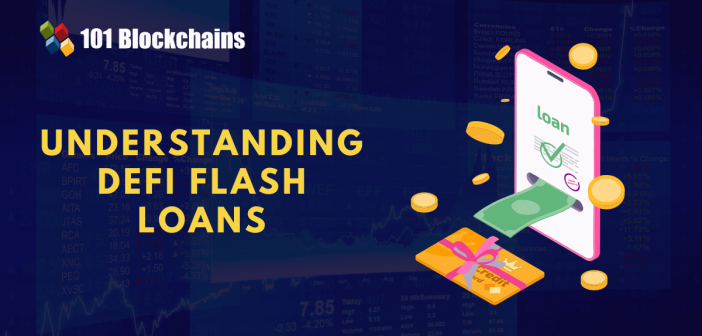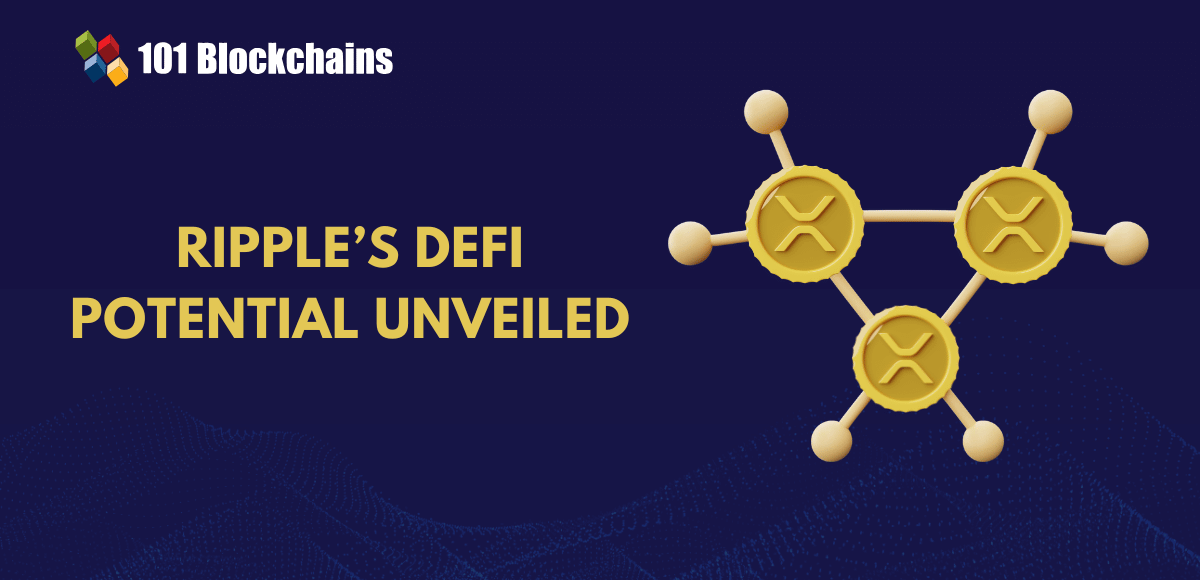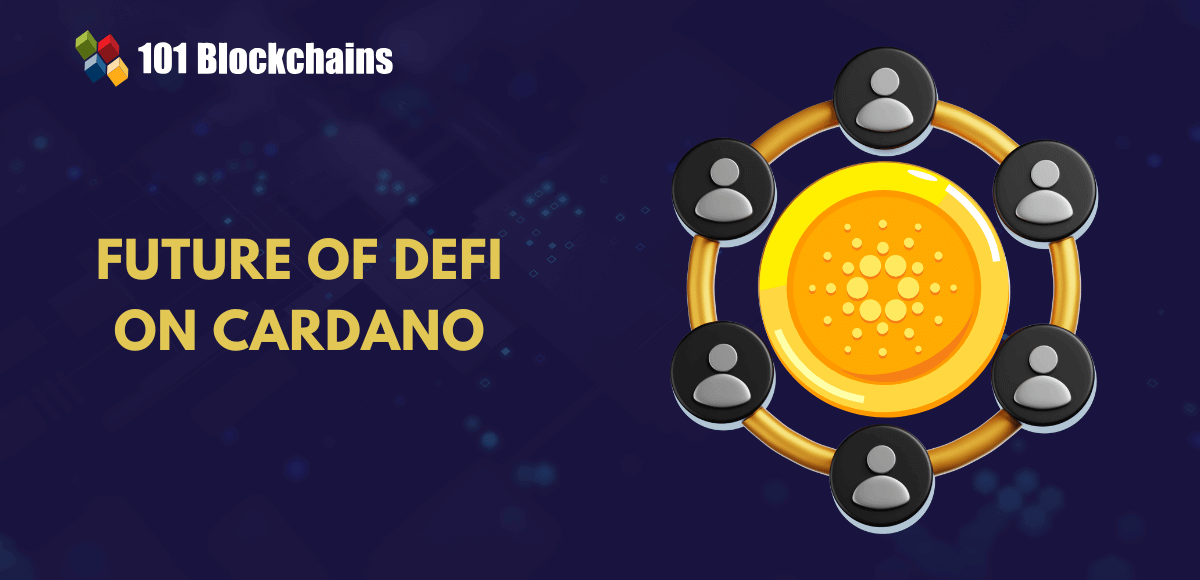Learn how blockchain truly works, master key definitions, and uncover what makes smart contracts so "smart." Dive into the fundamentals, gain valuable insights, and start your blockchain journey today!

- Decentralized Finance
Diego Geroni
- on October 29, 2021
What Are DeFi Flash Loans & How to prevent Flash Loan Attacks?
New to the term flash loans? Let’s dive in to know what are the uses of flash loans in DeFi (Decentralized Finance) and how can you prevent flash loan attacks.
The staggering levels of attention on the crypto space have been increasing at exponential rates in recent times. Even if skeptics have different views, the use of blockchain for transforming the conventional financial systems and processes. Therefore, you can notice the possibilities associated with DeFi or decentralized finance in the future. DeFi aims to introduce a permissionless, transparent, and decentralized financial ecosystem over blockchain networks.
Cryptocurrency has changed the perception of money, and DeFi adds fuel to the growth of an alternative financial ecosystem. DeFi has also promoted the popularity of flash loans, thereby drawing massive levels of attention towards them. The following discussion dives into flash loan basics, including how they work and their different use cases.
Want to know more about DeFi? Enroll Now: Introduction to DeFi Course
What is a DeFi Flash Loan?
The first thing you need to understand about flash loans in DeFi is the definition of a flash loan. It is basically a unique tool for enabling trading while allowing users to borrow unsecured loans from lenders without intermediaries. Smart contracts help in governing the transaction while ensuring execution of the transactions in compliance with rules specified in the contract.
The traditional banking approach involved loans in two distinct categories such as secured and unsecured loans. Secured loans demand some form of security as collateral, while unsecured loans do not need any collateral. The possibility of sanctioning unsecured loans depends profoundly on the past credit scores based on the previous records of paying back loans.
Want to explore in-depth about DeFi protocol and its use cases? Enroll in Decentralized Finance (Defi) Course- Intermediate Level Now!
Working of Flash Loan
The next important aspect in any account of flash loans explained properly directly points out to the working. First of all, you can consider a flash loan as an unsecured one, especially without the need for any collateral. In addition, flash loan is unique in the fact that users don’t need to qualify for a credit check or similar processes. All you have to do is ask lenders whether they could borrow $50,000 in Ether or ETH. If they approve the loan, then you could easily get the loan. So, what’s so unique about flash loans?
You need to repay the flash loan in the same transaction as you borrowed the loan. While the process may seem unreasonable to a certain extent, it shows how much we depend on the traditional transactions formats, which involve the movement of funds from one user to the other. For example, traditional transaction formats might include depositing tokens in an exchange or paying for goods and services.
If you have been exploring cryptocurrencies and the DeFi space, then you must have heard about Ethereum. The platform is considerably flexible, thereby paving the path for introducing programmable money. With flash loans in DeFi, users can assume a transaction program containing three distinct parts.
The first part of the transaction involves receiving the loan, while the net part involves using the loan for a productive purpose. The final part of the transaction focuses on the repayment of the loan. Interestingly, all steps in the flash loan transaction proceed at a rapid pace, thereby validating the ‘flash’ characterization.
Want to explore an in-depth understanding of security threats in DeFi projects? Enroll in DeFi Security Fundamentals Course Now!
Technical Explanation of Flash Loan Working
The understanding of ‘What is a DeFi flash loan?’ also finds new angles by reflecting on the technical explanation. Blockchain technology is the underlying technological foundation for issuing and managing flash loans. Diving deeper into the functionality of a flash loan, you can find smart contracts in the foundation of a flash loan. Smart contracts are basically computer programs operating on blockchain as self-contained computer programs.
Furthermore, it also ensures automatic execution upon fulfilling certain conditions. Smart contracts work on blockchain just like they are intended to without any concerns of third-party interference, censorship, fraud, or downtime. Therefore, smart contracts serve as helpful tools for swapping money, real estate, and anything of value within an instant.
Flash loans deal only with receiving, using, and paying back the loan amount in accordance with specific guidelines. Smart contracts help in specifying the particular guidelines for flash loan transactions. With the help of smart contracts, you can ensure receiving, use, and repayment within the same transaction.
Smart contracts also help in employing relevant security procedures when a transaction fails in fulfilling desired goals according to predefined conditions. The network would just reject the transactions as a security measure, and the funds go back to the lender. Therefore, you can clearly understand why flash loans in DeFi do not require any collateral.
Build your identity as a certified blockchain expert with 101 Blockchains’ Blockchain Certifications designed to provide enhanced career prospects.
Distinct Traits of Flash Loan
The characteristics of a flash loan are also another important factor for understanding them comprehensively. You could find the following traits helpful for providing a detailed overview of flash loans explained properly.
-
Smart Contract Rules
As you can notice clearly, flash loans rely considerably on smart contracts for their functionalities. Smart contracts can ensure encoding of the rules needed for facilitating flash loan transactions. Smart contracts ensure that transactions are complete only when the borrower has paid back the loan amount before the time for the transaction passes. When the borrower defaults in paying back the loan amount, the smart contract simply reverses the transaction. In such cases, it would be just like the transaction never happened.
Curious to understand the complete smart contract development lifecycle? Enroll in Smart Contracts Development Course Now!
-
Unsecured Loan
One of the foremost traits of flash loans DeFi refers to its nature as an unsecured loan. A Flash loan is an unsecured loan that does not require any collateral from the borrower for seeking a loan. However, the unsecured nature of flash loans does not imply that the lender cannot get back the amount they have lent. Flash loan transactions ensure the safety of lenders through smart contracts. Rather than offering a form of collateral, borrowers agree to pay back the flash loan within the expiry time of the smart contract.
-
Speed
The term ‘flash’ denotes a crucial highlight in the characteristics of flash loan transactions. In the most basic sense, flash loans exist for a short duration of time, and all the transactions are instantaneous. Loan seekers should also use smart contracts for performing instant transactions with the loan before the completion of the transaction. Therefore, you can clearly note that flash loan has a very limited lifespan and all the lending/borrowing activities should happen in the short duration of time.
Use Cases of DeFi Flash Loan
While flash loans DeFi present many favorable traits, it is reasonable to wonder about the different flash loan use cases. Here are some of the notable applications of DeFi flash loans in the real world.
-
Swapping Collateral
DeFi users could also leverage collateral exchanges for obtaining loans through multi-collateral lending apps. For example, if you have borrowed Dai from Compound followed by pledging Ethereum as collateral, then you need to exchange the ETH collateral for Dai collateral through a Dai flash loan for balancing the borrowed Dai.
-
Arbitrage Trading
Flash loan arbitrage is also an interesting use case of flash loan transactions. The pricing disparities among different markets present many profitable prospects for individuals. The process is referred to as arbitrage and creates small windows of opportunity for crypto traders to achieve faster profits. You can term the process as arbitrage trading.
Flash loan arbitrage involves purchasing coins at lower prices from one exchange, followed by selling them at higher prices on another exchange. So, they could generate profits quickly alongside paying back the loan quickly. Execution of all transactions in a short period of time could ensure effective arbitrage, albeit with certain levels of risk.
-
Saving Transaction Fee
Flash loan rollout supports the aggregation of all complex transactions in a single step, which would have generally passed through multiple steps in general transactions. As a result, you could find a trivial transaction fee with flash loan transactions. Furthermore, traders could also ensure savings in transaction fees by leveraging flash loans for purchasing and selling the related digital tokens or coins.
Aspiring to learn about the key features of Decentralized Finance? Here we have covered the DeFi features in detail!
Risks in Flash Loans
The detailed overview of flash loans in DeFi clearly shows how they can serve as one of the foremost strengths in powering the adoption of crypto. Some of the biggest strengths could also turn into some of the most prominent weaknesses. Flash loan transactions also present one of the formidable risks which everyone needs to watch out for.
The specific factor pointed out, in this case, would refer to the flash loan attack problem. It is important to note that the strength of a flash loan is evident in the smart contract, which also serves as the biggest weakness for flash loan transactions. Smart contracts are vulnerable to flash loan attacks, which are common and very formidable security attacks in flash loans.
Want to understand the best ways to use DeFi development tools like Solidity, React, and Hardhat? Enroll now in DeFi Development Course!
Understanding Flash Loan Attacks
Let us take a practical example for developing a better understanding of flash loan attacks in DeFi. Imagine that John wants to borrow USDT amounting in value to $20,000 USD. John uses a lending protocol that offers a flash loan instantly without any collateral. However, John needs to pay back the loan amount before the transaction expires. Therefore, John must work fast to pay back the debt before the lending protocol reverses the transaction. Without any collateral and complete dependence on a smart contract for ensuring that John pays back the loan amount, flash loans could present some risks.
Flash loan attacks result from discrepancies in the desired behavior of the smart contract due to certain bugs. In other cases, the flash loan attacks could also emerge from the manipulation of rules by hackers or the agreement itself. Such a form of exploitation of smart contracts could result in compromised flash loan protocols in flash loan attacks. Here is an overview of one of the most popular flash loan attack incidents which garnered attention in 2020.
dYdX Flash Loan Attack
The first instance of a flash loan attack in 2020 involved the decentralized lending app, dYdX. The attack started when a borrower took an ETH flash loan on the platform. Subsequently, the borrower divided the loan and transferred it to two different lending platforms such as Fulcrum and Compound. The Fulcrum platform developed on the bZx protocol served as the first point of action for the attacker.
They used a part of the loan for shorting ETH against wrapped Bitcoin or WBTC. So, Fulcrum had to acquire WBTC now. The information went to Kyber, another DeFi protocol, which addressed the order through Uniswap. However, the low liquidity of Uniswap led to a significant rise in the price of WBTC. As a result, Fulcrum had to pay more for the WBTC it procured.
On the other hand, the attacker also took out a WBTC loan on Compound by using the remaining dYdX loan. With the growth in price, the attacker flipped the borrowed WBTC on Uniswap and generated profits from the same. Subsequently, the attacker paid back their loan to dYdX while pocketing the remaining ETH.
You can clearly notice that attackers used five different DeFi protocols in the flash loan attack for manipulating the markets. The primary source of the problem was evident in the bZx protocol leveraged by Fulcrum. The attacker successfully manipulated the market and tricked Fulcrum into assuming that WBTC has a higher value than its actual worth.
Learn the fundamentals of Decentralized Finance (DeFi) with DeFi flashcards!
Frequently Asked Questions about Flash Loans
-
What is a flash loan?
Flash loans are unsecured loans in the DeFi ecosystem which enable borrowers to procure loans from lenders without any collateral. Flash loan transactions depend on smart contracts for receiving, using and paying back the loan in a specific time period.
-
How does a Flash Loan Work?
Flash loan transactions work with the help of smart contracts within a specified time interval. Borrowers have to repay the loan within the specified time. In event of failure to repay the amount, the smart contract would reverse the transaction.
-
What is Flash Loan Attack?
Flash loan attack is the process of introducing unwanted modifications in the smart contract code or leveraging the smart contract vulnerabilities for own benefit.
We have hosted a Insightful webinar for you on DeFi And The Future Of Finance. Become a member now to watch this on-demand webinar!
Final Words
On a final note, it is quite clear that flash loans have a decisive role in shaping up the future of DeFi. The facility of uncollateralized loans, along with the use of smart contracts, serve as the foremost highlights of flash loans. As a result, they showcase diverse possibilities for the growth of a completely new financial system.
Even if the use cases of flash loan transactions are quite limited at this point in time, they can lead to a wide range of new applications in DeFi. Furthermore, it is also important to note that the flash loan concept is in the nascent stages. Learn more about DeFi the prospects for the growth of flash loan transactions in the long run!
*Disclaimer: The article should not be taken as, and is not intended to provide any investment advice. Claims made in this article do not constitute investment advice and should not be taken as such. Do your own research!




![30+ Best Decentralized Finance Applications [Updated] best decentralized finance (DeFi) applications](https://101blockchains.com/wp-content/uploads/2020/10/decentralized-finance-applications.png)

